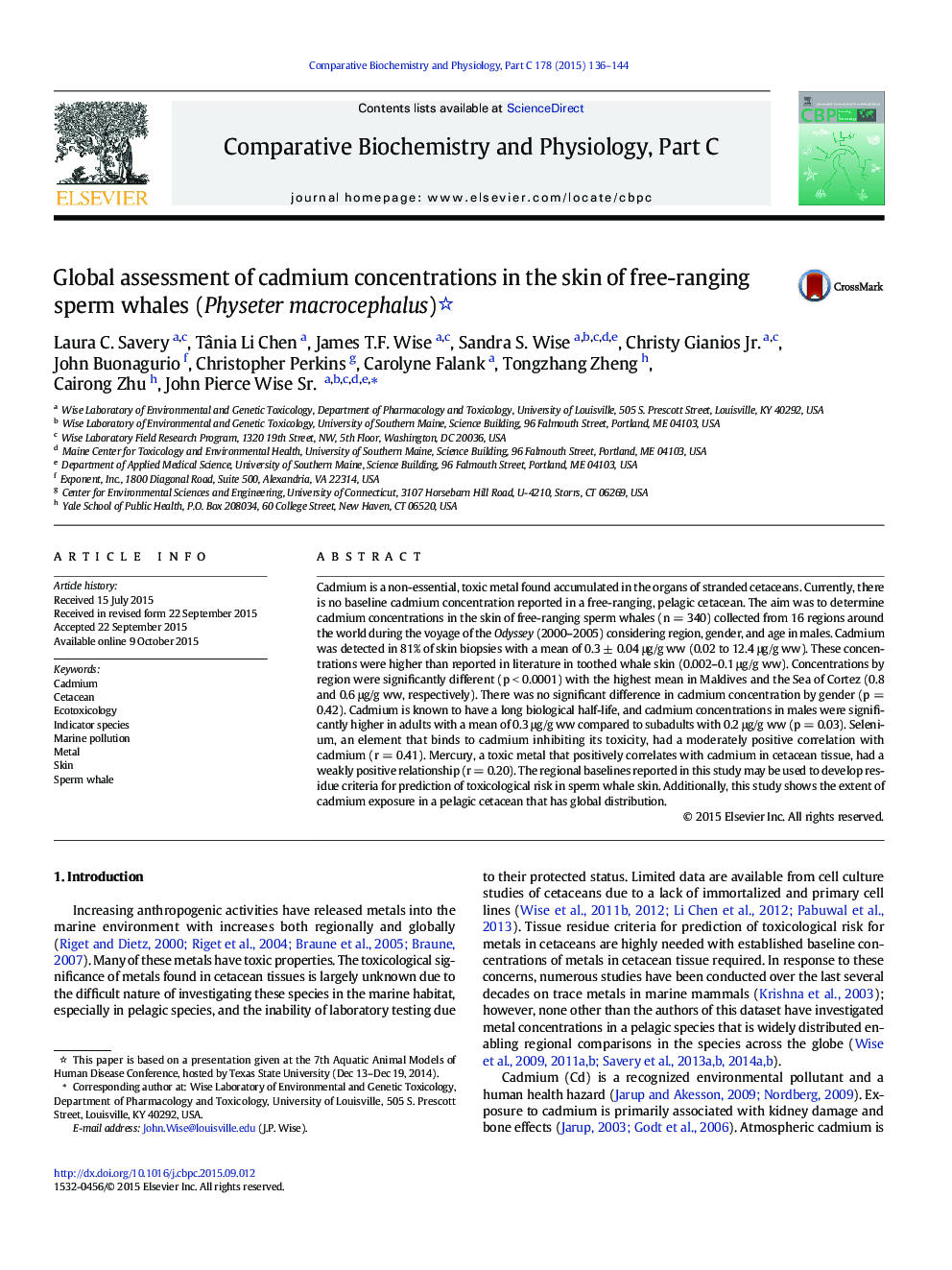| Article ID | Journal | Published Year | Pages | File Type |
|---|---|---|---|---|
| 1977203 | Comparative Biochemistry and Physiology Part C: Toxicology & Pharmacology | 2015 | 9 Pages |
Cadmium is a non-essential, toxic metal found accumulated in the organs of stranded cetaceans. Currently, there is no baseline cadmium concentration reported in a free-ranging, pelagic cetacean. The aim was to determine cadmium concentrations in the skin of free-ranging sperm whales (n = 340) collected from 16 regions around the world during the voyage of the Odyssey (2000–2005) considering region, gender, and age in males. Cadmium was detected in 81% of skin biopsies with a mean of 0.3 ± 0.04 μg/g ww (0.02 to 12.4 μg/g ww). These concentrations were higher than reported in literature in toothed whale skin (0.002–0.1 μg/g ww). Concentrations by region were significantly different (p < 0.0001) with the highest mean in Maldives and the Sea of Cortez (0.8 and 0.6 μg/g ww, respectively). There was no significant difference in cadmium concentration by gender (p = 0.42). Cadmium is known to have a long biological half-life, and cadmium concentrations in males were significantly higher in adults with a mean of 0.3 μg/g ww compared to subadults with 0.2 μg/g ww (p = 0.03). Selenium, an element that binds to cadmium inhibiting its toxicity, had a moderately positive correlation with cadmium (r = 0.41). Mercury, a toxic metal that positively correlates with cadmium in cetacean tissue, had a weakly positive relationship (r = 0.20). The regional baselines reported in this study may be used to develop residue criteria for prediction of toxicological risk in sperm whale skin. Additionally, this study shows the extent of cadmium exposure in a pelagic cetacean that has global distribution.
